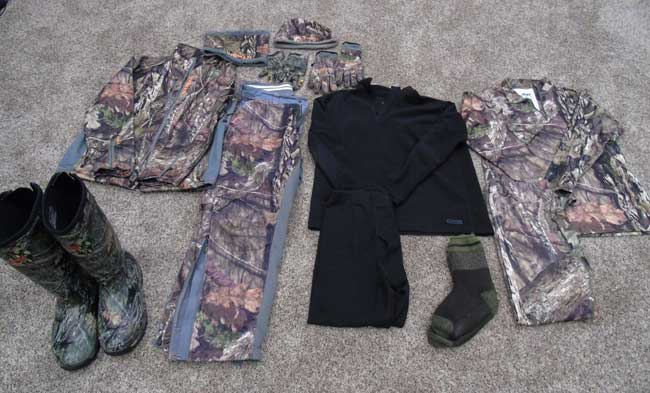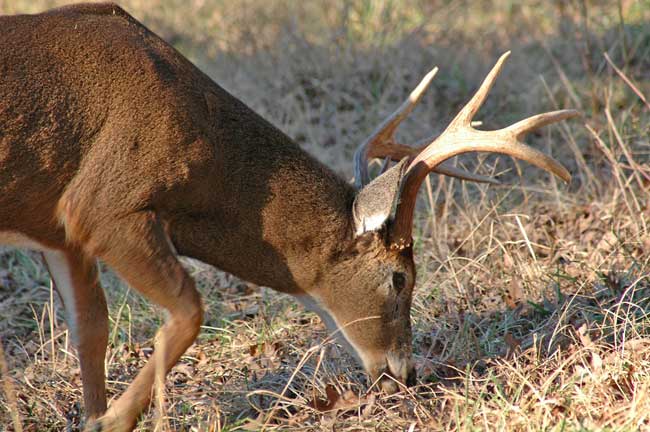Travis Leier | Mossy Oak ProStaff

I am often asked, “How do you set up in a ground blind in subzero weather?”
Since my family owns the land where I hunt, I've got two permanent ground blinds built. Those blinds are set up, so that one is in a deep ravine, and the other one is set up on a well-known deer travel area. I also use pop-up blinds, depending on where crops are planted.
During the early season in 2017, I had a pop-up blind just off a travel trail that the deer were using to go from their bedding area to the crop. In early October when the deer started moving more in the ravine, I moved that pop-up blind down into the ravine. I use a Primos Double Bull pop-up blind, brush it in really good and let the deer get accustomed to seeing it.
The other question I’m often asked, “How are you staying warm in subzero weather and keeping the deer from smelling you?”
I wash my clothes in scent-free detergent and store them in a scent-free bag. I bathe in scent-free soap, and I wear rubber boots when I hunt. I spray down good with an odor eliminator, and I’ve learned over the years that to stay really warm, your base layer has to be your most important clothing. I wear XGO. The company has a military-grade base layer, and those tops and bottoms are fantastic. About half the time that I’m wearing that base layer I have to shed clothes because I’m too warm.
Most people believe that your outerwear is your best defense for cold weather. However, I am totally convinced that the base layer is far more important than the outer layer to capture and hold heat. On top of the base layer, I wear Nomad gear, which is a Harvester coat and pant. With those two types of clothing, I can hunt for about four hours without getting cold. I have learned that after four hours, a strong wind can cut through those two layers. So, now I carry a sleeping bag with me, and when I start to get a little cool I get inside that sleeping bag and zip it up. The sleeping bag is also washed in scent-free soap and stored in a scent-free bag.
I haven’t hunted with a heater yet. As I’ve mentioned earlier, I usually take my buck before cold weather moves in, but this year I’ve bought a propane heater. Now, I know the deer can smell propane and that’s why I’m set up so I’m hunting into the wind. The only time that I am concerned about a deer coming in downwind of me is when I start rattling antlers.
Our rut happens in mid-October, and that’s when I start using my rattling-and-grunting deer-calling tactics. At this time of the year (when the rut’s on in November), I see big deer moving in to our property that I’ve never seen before. Our land usually will hold 50 to 75 bucks, which seems like a lot of bucks on just 800 acres, but the number of resident bucks that our land holds depends on the crops we plant.
In 2016, we were only holding about 15 or 20 bucks on that 800 acres, but this year we planted 400 acres of corn. The deer are using the corn not only for food but also for cover and that holds many bucks on our 800 acres. The crop we plant determines the number of bucks we can hold each year. Our corn was cut the first of November, so the deer’s movement patterns have changed some.
Travis Leier of Velva, North Dakota, has been hunting whitetails for 21 years and has been a Mossy Oak ProStaffer for over a year.






























